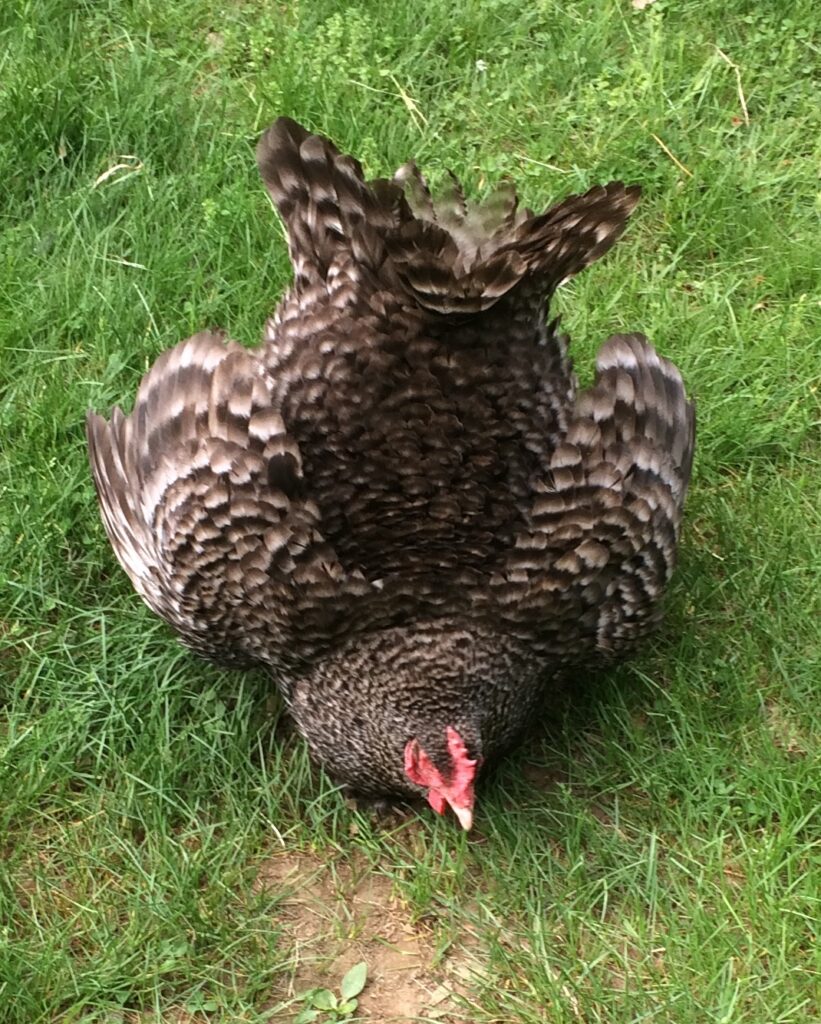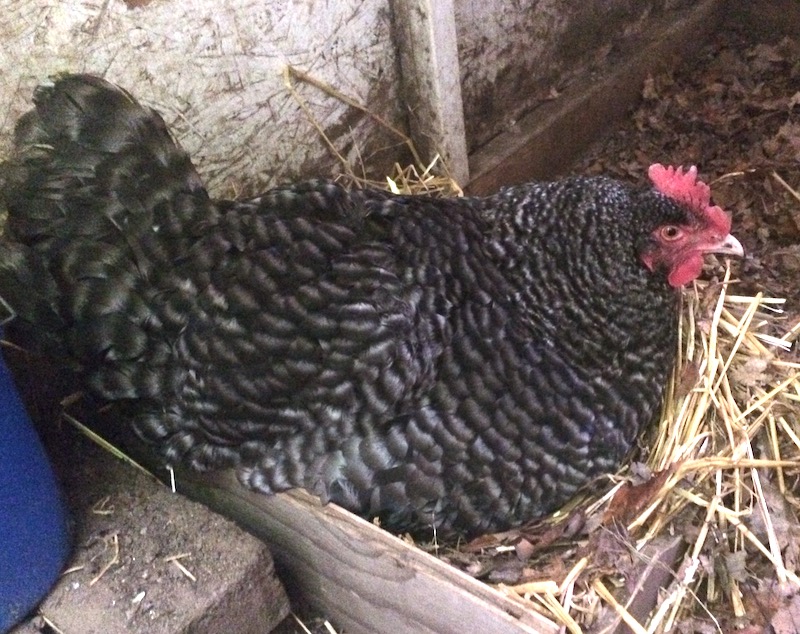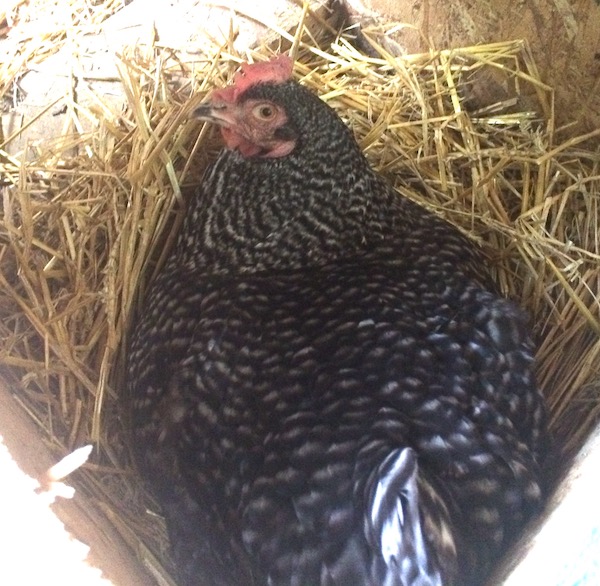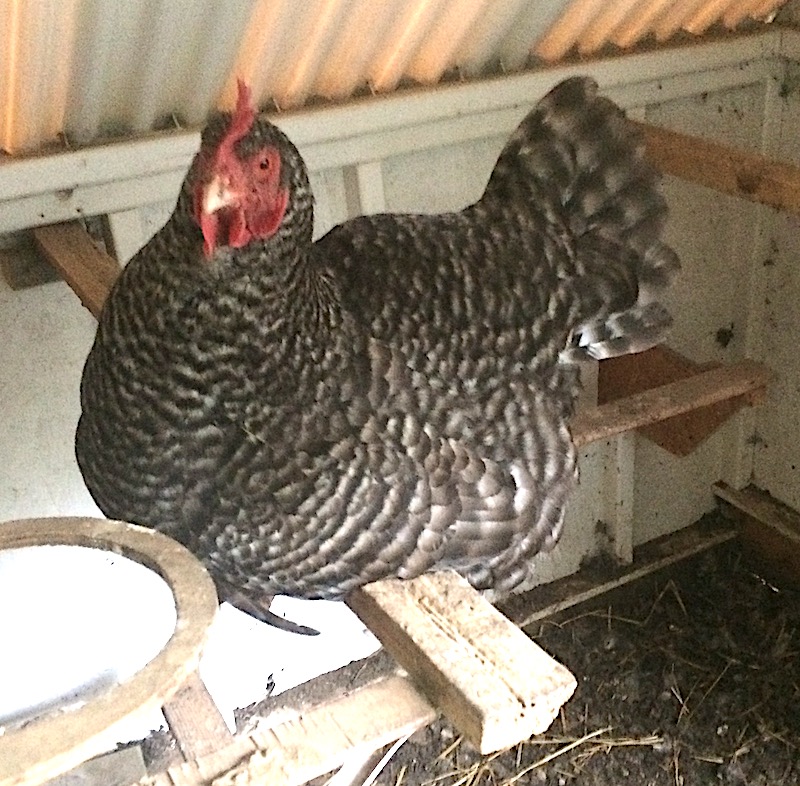
Having a hen go broody is a sustainability blessing, but it is possible to have too much of a good thing. I was trying to induce my hen that usually goes broody to get into the mothering mood but I got more than I asked for.
I wanted my broody hen to start sitting in May rather than June or July so that her girl chicks would start laying in November. That would coincide with The Molt, when all of the older hens would stop laying. An egg every other day beats no eggs at all for two months or more.
To encourage the broody mood, I placed my six fake eggs in one nest. Seeing a clutch of eggs is supposed to help trigger the setting instinct. It was a slow triggering. Another factor is temperature and we had a string of chilly days and nights just about the time I placed my fake eggs. None of the hens showed any change.
On the first warm day, however, Broody had spread herself wide over one of the nest boxes. She wasn’t flaring at the other hens (a telltale sign) but she had started to quietly cluck in that distinctive broody hen double-cluck. Yay, I thought. My hen went broody. She was sitting on fourteen real eggs.
Two is One

The day we planned to move Broody to her maternity ward — the half-coop with a nest on the ground — another hen had caught the contagion of broodiness. She started setting on the other nest — full of the fake eggs. Yay again, I thought. Two is one and such. While I did not need more chicks than what would come from Broody, I like to encourage other hens to go broody too. There will come a time when Broody isn’t around anymore.
I lifted Sumo (so named because she’s a big girl) to find that she was only setting on two real eggs. The rest were my fakes. We gave her four of Broody’s 14. Fourteen seemed like more than one hen could really manage. Six was a good clutch for a first-timer, in case she lapses out of broodiness and abandons the nest. (That happens.)
We moved Broody in the dark of night on Wednesday, the 19th. She took the move in stride and hasn’t budged from her new ground-level nest. As a side note, nest boxes on the ground permit the baby chicks to come and go. Sumo was moved the next night. She, too, handled the move quietly.

The trick is to move them in the dark of night (gently covering their eyes seemed to calm them down). In the morning, when they wake up in the new nest, they just assume they’ve always been there and accept the change without a fuss. If you move a broody hen in the daytime, when she can see that the new nest is not the same, she’ll abandon it and pace desperately to get back to her original nest. I found that out the hard way by trying to make the move too soon. Even late twilight is not dark enough. It’s got to be really dark.
Too Many!
The trouble came Friday morning. A third hen, and then a fourth, started flaring at their flock-mates and doing the double-cluck. Broodiness can be contagious. Too much of a good thing. I had nowhere to put a third or a fourth broody hen. Nor did I need two dozen chicks. I had to break #3 and #4 of the motherhood mood.
Happily, #4 gave it up after a day of being shooed off the nest a few times. #3, however, persisted. She had to be taken off the nest many times each day and placed far from the coop, in hopes of her being distracted on the way back. She was not distracted and made her way back to the nest. She insisted on sleeping in the nest, so we placed her in the dog kennel in the garage for a couple of nights.

Finally, today, on the third day of taking her off the nest, she seems to be fading. Instead of flaring up at her flock mates, she was quietly scratching and foraging alongside the others.
Tonight, she flew up to a roost bar in the coop. Granted, she did not have much choice. I had the nest cover ‘door’ down. Still, she seemed happily loafed down on the bar, ready to sleep like a regular chicken. Whew.
Why not just let her set on nothing?
Setting on eggs is taxing on the hen’s body. She doesn’t eat or drink much for the three weeks of incubation. A problem with a hen being broody but no viable eggs under her is that she will keep sitting on an empty nest. There’s no natural trigger to break the broody mood. The wiggling beneath her, the little plaintive cheeps from the chicks, all seem to snap a hen out of incubation mode and into mother mode. Without that, she just keeps sitting on the nest, not eating or drinking much. Add to that, the longer a hen is allowed to sit broodily on a nest, the harder it is to break her of it.
So, it was with some relief that #3 gave it up after “only” three days. I will have my hands full with Broody and Sumo’s chicks in a couple of weeks. Sometimes, there is just too much of a good thing.
— —

So putting the broody into a dog kennel for a few days broke the Broody Cycle?
Good to know if that’s an easy way to prevent an unneeded broody from stopping laying and deconditioning herself trying to brood.
Nice report Mic!
It is great that you are encouraging folks to develop a real source of protein. Tomatoes and peppers are not going to cut it.
Hi (not)Frank,
Yes, survival gardening needs to focus on growing carbs and protein since that’s what people need for fuel. Extras like tomatoes and peppers can help flavor things but survival gardens don’t need a lot of that.
[…] older hens dry up. This spring, I tried to coax my broody hen to lay sooner than she usually did (see related post). I was almost too successful. Instead of one broody hen (all I really need), I got […]